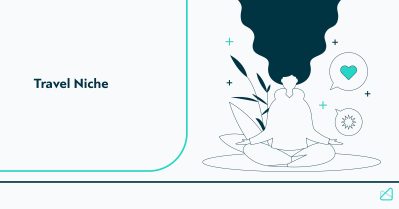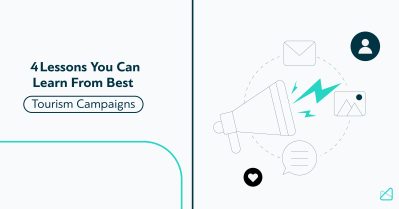The Most Efficient Destination Marketing Strategies and How to Implement Them

Destination marketing is not a brand new thing in the tourism industry. Many hotels, restaurants, and even OTAs saw great value in making a particular destination highly popular. Most of the challenges in the past came from technological restrictions.
Today, with a valid digital marketing plan, one can run countless campaigns to increase the popularity of specific destinations. Some other strategies still work too. Today, we bring you the most efficient destination marketing strategies and how to implement them.
What is destination marketing?
Destination marketing has become an inseparable part of the modern marketing mix used by hotels, restaurants, OTAs, cities, and even countries. What does it imply?
First of all, destination marketing is just another marketing approach. However, there is one thing that makes it unique. Instead of focusing on marketing a room, service, hotel, or restaurant, destination marketing is about promoting specific locations and their benefits.
Destination marketing can advertise attractions, towns, cities, or an entire country. It focuses on advertising the object of the ad as a whole and everything it offers. The goal is to increase travelers’ awareness of certain destinations.
Destination marketing uses subtle calls to action to invite travelers to visit the location and book a venue through the company that advertises the destination in question. The content thus remains evergreen even if the old hotels and resorts close and new ones open, paving the way for sustainable tourism.
Top 4 destination marketing strategies
Here are four destination marketing strategies that provide incredible results.
Strategy 1: Strategic destination branding
What is it
Strategic destination branding is all about stepping up traditional destination marketing strategies. It refers to approaching a destination as a brand. This strategy focuses on building a consistent brand image for a destination in the medium or long term.
Why is it good
Strategic destination branding is good because it provides you with messaging that you can use for all your future marketing campaigns. While it can be exceptionally requiring in terms of research, planning, and execution, this type of approach is perhaps the most sustainable. It can also affect pro-poor tourism (PPT) marketing strategies because increasing the influx of tourists can create new business opportunities.
How to do it
Strategic destination branding calls for extensive research and strategic planning. First, you need to identify the destination’s products, research the target audience, and finally decide on the brand tone of voice.
Real-life example
The most noteworthy real-life example of this strategy is Hamburg’s city branding. The city became a major tourist attraction in Europe and even saw the rise of some of the most significant events. Even today, this city has one of the most elaborate tourist destination management initiatives.
Strategy 2: Focus on unique selling propositions
What is it
A unique selling proposition refers to attractions and benefits only one destination can offer. Destination marketing campaigns focused on USPs will showcase the unique selling points of a destination.
Why is it good
Destination marketing strategy based on USPs is good because it can help you:
- Make travelers realize why the destination stands out from other popular destinations.
- Attract more people to visit it.
- Focus more on target customers and destinations to discover more USPs.
How to do it
To excel at it, you need to devote time and effort to discovering USPs in a specific destination. USPs can be specific or borderline crazy as long as they highlight the quality of a location. Once you have USPs, you need to decide the best content and channel to use. Launching a video marketing campaign or running paid ads on social media and search engines is a good option.
Real-life example
The best real-life example for this strategy is the marketing campaign “Sheep View” by the Faroe Islands. The goal was to put the islands on the map of tourism. The campaign helped generate 2 billion impressions and over $56 in PR value.
Strategy 3: Focused on key markets
What is it
A destination marketing strategy focused on key markets is self-explanatory. Instead of focusing on the destination’s unique values, the marketing team focuses on what travelers need and want. Once they identify a traveler’s desires and know the destination’s values, they have a conceptual framework to work with.
Why is it good
This strategy is good because it shifts focus from the destination to target markets. Choosing what unique offers to focus on is easier and significantly more relevant because marketers know who needs to receive the message.
How to do it
A focused-on-critical-markets strategy is straightforward to plan and execute. You need to do extensive target market research to create ideal customer profiles. The key would be to discover which offers cater to target market needs to entice people to travel to your destination.
Real-life example
Colorado’s “Come to Life” campaign is a real-life example of a destination marketing strategy built on extensive market research. Marketers on the campaign decided not to maximize the reach but to maximize conversions. They focused on Houston, Chicago, and Dallas markets to do it. The campaign did cost $4.5 million, but it stirred $898 million in spending in the state.
Strategy 4: Influencer marketing works!
What is it
You are probably well aware of influencer marketing. It’s a marketing approach that leverages social media users with a considerable following to showcase your product, service, or, in this case, destination. It helps maximize the reach, and with a relevant influencer, one can even increase conversion rates.
Why is it good
Influencers in destination marketing campaigns are suitable for several reasons. First, influencer marketing works. Then, it is a shortcut to reaching a vast and relevant audience. And, finally, it’s versatile. You can use it for advertising all sorts of attractions and destinations.
How to do it
There are two critical aspects of every influencer-based destination marketing campaign. First, you have to decide what you want to promote. And secondly, you need to find a relevant influencer with a big enough audience. Here is how it looks in practice.
Real-life example
One of the recent successful influencer-based destination marketing strategies is Sun Peak. Sun Peak is a ski resort in British Columbia. They decided to promote crowd-free ski runs, the regions’ natural beauty, and seasonal festivals. They partnered with Callum Snape, an adventure photographer, and Instagram influencer. The result – over 200,000 article views, the resort has become known as an “insider secret.”
Conclusion
All parties in the hospitality industry have access to various marketing strategies that work. The destination marketing strategies we went through have been put to the test and proved they deliver outstanding results. But since every destination is unique and caters to a unique market, we will leave it to you to decide which strategy to use.
Subscribe to
our newsletter
Yay! You are now
subscribed to our
newsletter
Mize is the leading hotel booking optimization solution in the world. With over 170 partners using our fintech products, Mize creates new extra profit for the hotel booking industry using its fully automated proprietary technology and has generated hundreds of millions of dollars in revenue across its suite of products for its partners. Mize was founded in 2016 with its headquarters in Tel Aviv and offices worldwide.
Related Posts

Travel Niche: What It Is, How to Leverage It, Case Studies & More
14 min. Niche travel is one of the few travel sectors that have maintained their pre-COVID market growth. By catering to specific traveler segments, niche travel developed products around adventure travel, eco-tourism, LGBTQ+ travel, and wellness retreats. Take adventure tourism as only one segment of the niche tourism market. In 2021, it reached 288 billion […]

4 Lessons You Can Learn From the Best Tourism Campaigns
13 min. Businesses in the tourism industry rely heavily on marketing to generate leads and boost conversion rates. Tourism marketing is as old as tourism itself – and it always reflects the destination and service benefits relevant to the current travelers’ needs, wants, and expectations. In other words, tourism campaigns must constantly move forward, and […]

The Vital Role of Market Segmentation in the Tourism Industry
15 min. The tourism industry is an ever-growing and competitive landscape, presenting both challenges and opportunities for businesses operating within it. This is where market segmentation comes in handy. In this blog post, we will discuss what market segmentation is, the importance of market segmentation in the tourism industry, and how online travel agencies can […]
